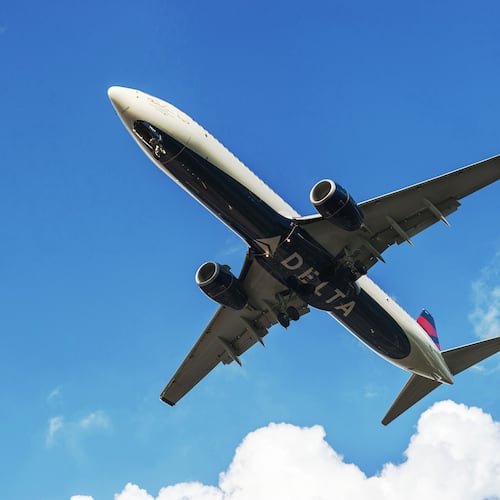FUNDING BREAKDOWN FOR COBB BUS-RAPID TRANSIT
- $242 million (49 percent) — Federal New Starts funds
- $100 million (20 percent) — Cobb County
- $152 million (31 percent) — Other sources (additional federal funding, municipalities, community improvement districts, universities, naming rights, potential public/private partnerships or private organizations)
Total: $494 million
A $494 million bus rapid transit system in Cobb County is not only achievable, it could begin ferrying people from Kennesaw to Midtown as early as 2018, a new study states.
There’s just one hiccup.
Proposed funding for such a system — a sort of bus/train hybrid that operates on roads in its own designated lane — is far from a sure thing.
According to an analysis conducted for the county by Kimley-Horn Associates, Cobb would have to scrape together $100 million, most likely from a voter-approved sales tax, to reach the 20 percent threshold required to obtain federal dollars for the project.
Federal funding can cover up to half the cost — $242 million. But Cobb would have to beat out transit providers from around the country and locally, including MARTA and the Atlanta Streetcar system, to get one of the coveted grants from the Federal Transit Administration’s New Starts program.
As-yet unidentified contributors would pitch in for the remaining third, or $152 million. Potential sources of income cited in the study include Cobb cities, the Cumberland or Town Lake Community Improvement Districts (CIDs), universities, public/private partnerships, private organizations, or the sale of naming rights.
To date, however, no CIDs, cities or private organizations have committed to help pay for the $152 million chunk that’s proposed to come from “other sources,” said Cobb County Department of Transportation Director Faye DiMassimo.
Cumberland CID Chairman Tad Leithead said businesses in his district strongly support a bus rapid transit line. But they have already committed $5 million toward a diverging diamond interchange at Windy Hill Road and $10 million toward improving access to the new Atlanta Braves stadium site.
“The CID’s not going to be able to step up and fund that amount or even a significant portion of that amount,” Leithead said. “But assuming the county is able to put together a series of funding mechanisms that include a reasonable contribution from the CIDs, then yes, we are willing to look very hard at providing financial support.”
Commission Chairman Tim Lee said he believes support will fall into place.
“We are keeping (the Federal Transit Administration) informed with hopes they will look favorably on it,” Lee said.
Metro Atlanta has not received any FTA New Starts funding since 1994, when more than $300 million was granted to extend MARTA rail to North Springs. Some say the metro region is overdue, and if Cobb could line up its 20 percent, it would leap ahead of MARTA and the Atlanta Streetcar in terms of grant consideration. But the county would still have to compete for cash with transit agencies in other states.
Lee said a 1 percent sales tax would be the logical source for coming up with the local funding. The current penny sales tax for facilities, parks and transportation expires Jan. 1, 2015. But that money has already been designated for other projects. He said conversations will begin soon about the possibility of asking voters to approve a new tax in a November referendum.
The tax would generate about $120 million annually, DiMassimo said.
Cobb Parkway is a key artery for the county. Sixty percent of residents live within 5 miles of it. In addition, 118,698 jobs are located within a mile.
Proponents of the bus rapid transit line from Kennesaw to Midtown say it could provide a much-needed transit link between Kennesaw State University and other hubs of activity such as Town Center, the city of Marietta and Cumberland Mall, as well as the new Braves stadium.
The bus rapid transit vehicle is envisioned to operate more like a train — with a higher capacity than a regular bus and the ability to board through several doors on both sides of the vehicle. The buses would travel between stations in their own dedicated travel lanes, which would be newly constructed along Cobb Parkway, until they reach the Perimeter. Then they would continue to Arts Center station in Midtown on the I-75 HOV lanes.
While on Cobb Parkway, the buses would have the technology to trip traffic signals to turn green to avoid getting stuck at congested intersections. Fares would be collected off-board, using a system similar to the MARTA Breeze card, to prevent boarding delays.
Skeptics such as conservative Cobb Commissioner Bob Ott question whether the project is necessary.
“The traffic is on I-75 and I-285,” Ott said. “To me, if they are going to build a transit system, you need to build it where people are trying to go already and not where you think they might want to go.”
Ron Sifen, president of the Cobb County Civic Coalition, also voiced misgivings.
“(It) benefits property owners close to planned transit stations to the detriment of all other businesses in the corridor — and this is at a huge cost to taxpayers,” Sifen said.
But Lee said the overall cost for bus rapid transit is significantly less than for the new $840 million optional toll lanes along I-75/I-575 that will start being built later this year.
About the Author
The Latest
Featured

